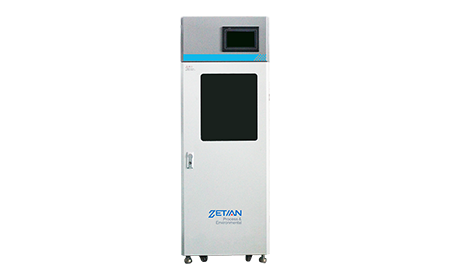 Email
EmailUnder weak acid condition, cyanide and chloramine T will generate chlorine hydride, and then reacts with isonicotinic acid to produce glutaconaldehyde through hydrolysis, at last creates purple-blue compound by the effect of barbituric acid. Within a certain concentration range, the chromaticity is in direct proportion to the mass concentration of cyanide.
Features
Permeance measurement technology will not be interfered by chromaticity, suspended solids and bubbles
Special design of flow path and reagent proportion, high detection precision, low LLOQ (0.05mg/L)
Adopt Constant Temperature Fiber Technology and Light Intensity Compensation Algorithm, small drift for long-term operation
Small maintenance workload and low maintenance cost
Self-diagnostic function
Highly integrated valve terminal, each valve can be maintained, disassembled and cleaned individually
Use USB flash disk for software updating and data exporting, more convenient
Touch control of Android screen; modular design; backplane can work off-screen, and unaffected by misoperation
Quality control function, equipped with parallel sample test, standard sample verification and standard sample recovery rate detection function
Reverse control function: autostart the instrument via flow, pH and other methods
Store data for 10 years; support simultaneous uploading of 2 different protocols
Applications
Applied in environmental pollution source monitoring, industrial process water monitoring, municipal sewage processing, surface water monitoring, and surface water monitoring, etc.
Specifications
Measuring method: Isoniacin-barbituric Acid Spectrometry
Range: 0.05~1/2/5mg/L
Indication error: ±10%
Repeatability: ≤5%
Zero drift: ±5%F.S.
Span drift: ±5%F.S.
Reagent: standard reagent can make 400 samples
Ambient temperature: 5℃~45℃
Measurement interval: continuous, 1, 2, 3…24 hours, or be started via serial port
Maintenance:<2 hours/month